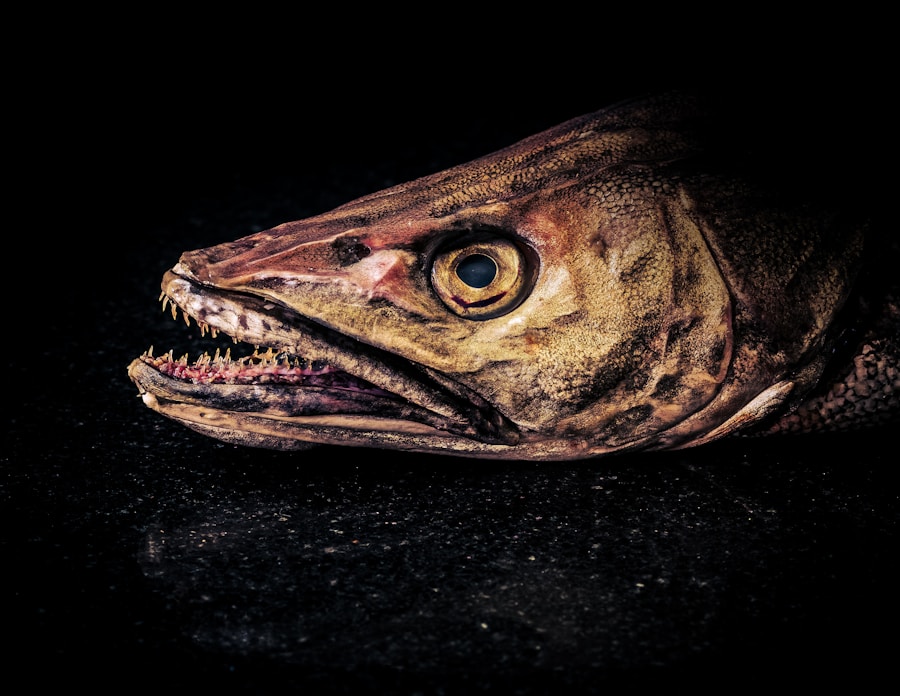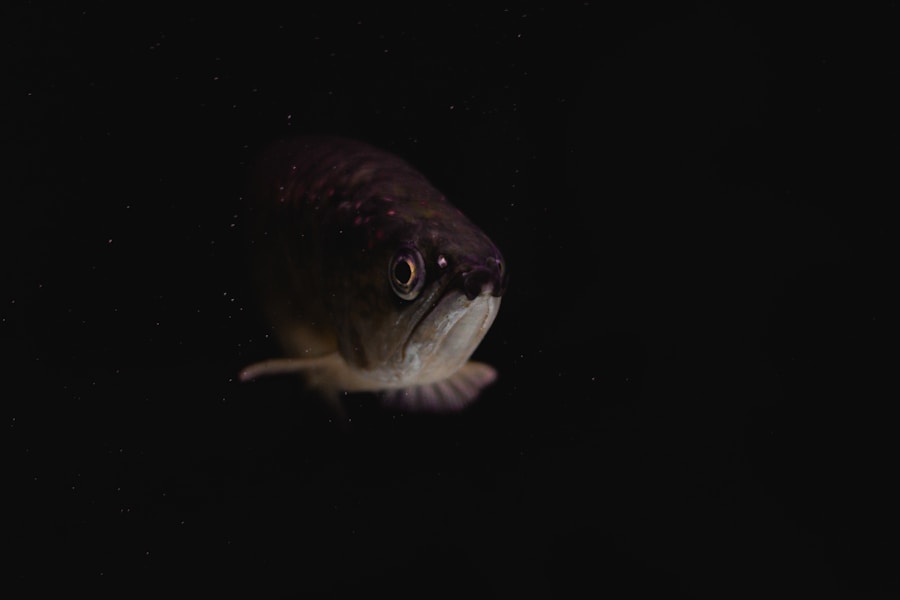Download links
How to install The Mysterious World of Angler Fish APK?
1. Tap the downloaded The Mysterious World of Angler Fish APK file.
2. Touch install.
3. Follow the steps on the screen.
Description
Angler fish, belonging to the order Lophiiformes, are a fascinating group of deep-sea fish known for their unique adaptations and intriguing behaviors. These creatures inhabit some of the most extreme environments on Earth, primarily the dark depths of the ocean, where sunlight fails to penetrate. The angler fish is perhaps best recognized for its bioluminescent lure, a specialized appendage that dangles from its head, which it uses to attract prey in the pitch-black waters of the deep sea.
This remarkable adaptation not only aids in hunting but also serves as a striking example of evolutionary ingenuity. The diversity within the angler fish family is astounding, with over 200 species identified to date. They vary significantly in size, shape, and coloration, showcasing a wide range of adaptations that allow them to thrive in their specific environments.
While many people may be familiar with the more prominent species, such as the deep-sea angler fish, others are less known but equally captivating. The angler fish’s ability to survive in such inhospitable conditions has made it a subject of interest for scientists studying evolutionary biology and marine ecology. As we delve deeper into the world of angler fish, we will uncover the intricate details of their physical characteristics, feeding habits, reproductive strategies, and the challenges they face in their natural habitats.
Key Takeaways
- Angler fish are deep-sea predators known for their bioluminescent lure and large mouths.
- They have a unique physical appearance, with a large head, sharp teeth, and a modified dorsal fin used as a lure.
- Angler fish are ambush predators, using their bioluminescent lure to attract prey in the dark depths of the ocean.
- Reproduction in angler fish involves parasitic mating, where the male fuses to the female and becomes a permanent sperm provider.
- Angler fish are found in deep-sea habitats around the world, with some species living in the Atlantic and others in the Antarctic. They face threats from deep-sea fishing and habitat destruction.
Physical Characteristics and Adaptations
Angler fish exhibit a variety of physical characteristics that are not only striking but also serve crucial functions in their survival. One of the most notable features is the illicium, or lure, which protrudes from their heads. This elongated structure is tipped with a bioluminescent organ called the esca, which emits light to attract unsuspecting prey.
The light produced by the esca is a result of chemical reactions involving luciferin and luciferase, similar to the mechanisms found in fireflies. This adaptation is particularly effective in the dark depths of the ocean, where light is scarce, allowing angler fish to lure in smaller fish and other marine organisms that are drawn to the glow. In addition to their lures, angler fish possess other adaptations that enhance their predatory efficiency.
Their mouths are large and equipped with sharp teeth that can capture and hold onto prey effectively. Some species have highly expandable stomachs that allow them to consume prey much larger than themselves. This is particularly advantageous in an environment where food can be scarce; by being able to eat large meals when available, angler fish can sustain themselves for extended periods without needing to hunt again.
Furthermore, many angler fish have a flattened body shape that helps them navigate through their environment and remain inconspicuous while waiting for prey.
Feeding and Hunting Behavior

The feeding behavior of angler fish is as unique as their physical characteristics. They are primarily ambush predators, relying on their lures to attract prey rather than actively pursuing it. This strategy is particularly effective in the deep sea, where energy conservation is vital due to the scarcity of food resources.
When a potential meal approaches the glowing lure, the angler fish strikes with remarkable speed and precision, using its large mouth to engulf the unsuspecting victim. Angler fish have been observed employing various tactics to enhance their hunting success. For instance, some species will sway their lures back and forth to mimic the movements of small prey or even use their bioluminescence to create patterns that can confuse or entice potential meals.
This behavioral flexibility demonstrates their adaptability and intelligence as hunters. Additionally, certain species have been known to exhibit a form of cooperative hunting behavior, where multiple angler fish work together to corner and capture larger prey items.
Reproduction and Mating Rituals
| Species | Mating Ritual | Reproduction Rate |
|---|---|---|
| Lions | Mating occurs every 15-30 minutes for several days | 2-4 cubs per litter |
| Penguins | Mating involves a courtship display of stones and vocalizations | 1-2 eggs per breeding season |
| Elephants | Males compete for access to females in estrus | 1 calf every 2-4 years |
Reproduction among angler fish is a complex and often bizarre process that reflects their unique adaptations to life in the deep sea. One of the most striking aspects of angler fish reproduction is sexual dimorphism; females are significantly larger than males. In many species, males are much smaller and have evolved a fascinating method of reproduction known as sexual parasitism.
When a male encounters a female, he will latch onto her body with his teeth and eventually fuse with her, becoming a permanent reproductive partner. This adaptation ensures that males are always available for mating when females are ready to spawn. The mating rituals of angler fish can vary widely among species but often involve elaborate displays of bioluminescence or specific movements that signal readiness to mate.
Once fertilization occurs, females will lay thousands of eggs, which are typically released into the water column where they float freely until they hatch. The larvae are planktonic and drift with ocean currents during their early life stages before eventually settling into deeper waters as they mature. This reproductive strategy allows for a greater chance of survival for the offspring in an environment where predation is high.
Habitat and Distribution
Angler fish are predominantly found in deep-sea environments, typically at depths ranging from 200 meters (656 feet) to over 2,000 meters (6,561 feet). They inhabit various marine ecosystems, including continental slopes and abyssal plains, where they can find suitable conditions for hunting and reproduction. The extreme conditions of these habitats—such as high pressure, low temperatures, and complete darkness—have shaped their unique adaptations over millions of years.
For instance, the famous deep-sea angler fish (Melanocetus johnsonii) is commonly found in the North Atlantic Ocean, while other species inhabit tropical waters or even shallower coastal areas. The diversity of habitats occupied by angler fish highlights their adaptability and resilience in various marine environments.
As researchers continue to explore deeper oceanic regions using advanced technology like remotely operated vehicles (ROVs), new species of angler fish are being discovered, further expanding our understanding of their distribution and ecological roles.
Conservation Status and Threats

Despite their remarkable adaptations and ecological significance, angler fish face several threats that jeopardize their populations and habitats. One of the primary concerns is overfishing, particularly in regions where deep-sea fishing practices are prevalent. Many angler fish species are caught unintentionally as bycatch in trawl nets targeting other fish species.
This unintentional capture can lead to significant declines in angler fish populations, especially since many species have slow growth rates and low reproductive output. Additionally, habitat destruction poses a significant threat to angler fish populations. Activities such as deep-sea mining and bottom trawling can disrupt delicate ecosystems on the ocean floor, leading to loss of habitat for these specialized creatures.
Climate change also presents challenges by altering ocean temperatures and currents, which can affect food availability and breeding patterns for angler fish. As oceanic conditions continue to change due to human activity, understanding and mitigating these threats becomes increasingly important for ensuring the survival of these extraordinary deep-sea dwellers. In conclusion, angler fish represent one of nature’s most fascinating examples of adaptation and survival in extreme environments.
Their unique physical characteristics, hunting strategies, reproductive behaviors, and ecological roles highlight the complexity of life in the deep sea. However, as we learn more about these remarkable creatures, it is crucial to recognize the threats they face and take action to protect their habitats for future generations.
If you’re interested in learning more about online fishing, be sure to check out The Ultimate Guide to Taya365 Online Fishing. This comprehensive article covers everything you need to know about fishing in the digital age, including tips and tricks for catching the biggest fish. And for those looking to master the art of online fishing, Master the Art of Online Fishing with Taya365 provides valuable insights and strategies for success.
FAQs
What is an angler fish?
An angler fish is a deep-sea fish known for its unique appearance and hunting method. It has a large head with a wide mouth and sharp teeth, and a bioluminescent lure that it uses to attract prey.
Where do angler fish live?
Angler fish are found in the deep waters of the Atlantic and Antarctic oceans, as well as in the waters around Australia and New Zealand. They typically live at depths of 200 to 2,000 meters.
How do angler fish catch their prey?
Angler fish use a bioluminescent lure, called an esca, to attract prey in the dark depths of the ocean. When a smaller fish or crustacean approaches the lure, the angler fish quickly snaps its jaws shut, capturing its prey.
What do angler fish eat?
Angler fish are carnivorous and primarily feed on small fish, crustaceans, and other invertebrates. They are opportunistic feeders and will eat whatever prey is available in their deep-sea habitat.
Are angler fish dangerous to humans?
While angler fish are not typically dangerous to humans, they do have sharp teeth and a powerful bite. However, their deep-sea habitat means that encounters with humans are rare.





